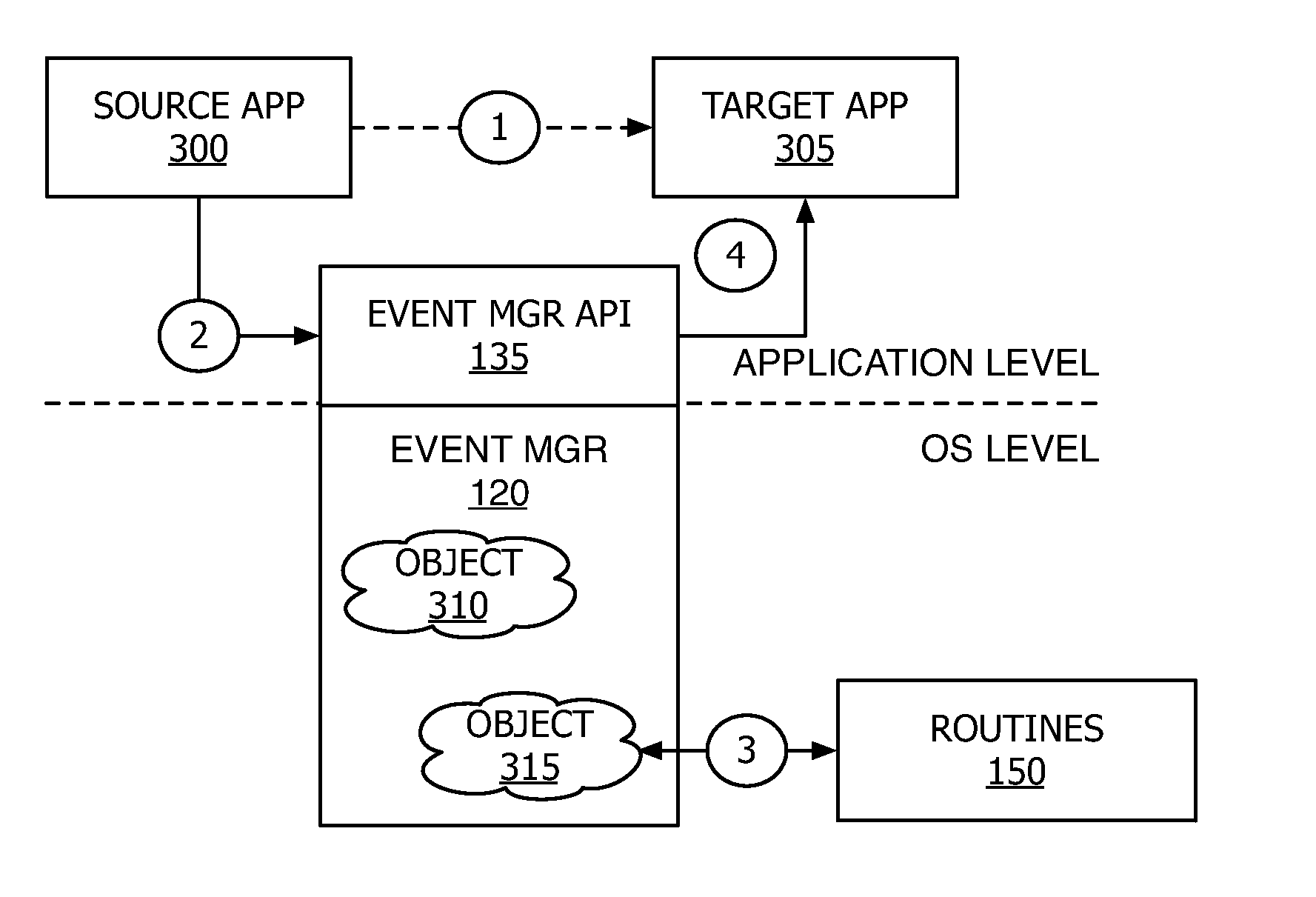Typed-Data Translation for Platform Independence
a technology of platform independence and typed data, applied in the field of typeddata translation for platform independence, can solve the problem that recompiling a program does not, however, address the problem
- Summary
- Abstract
- Description
- Claims
- Application Information
AI Technical Summary
Benefits of technology
Problems solved by technology
Method used
Image
Examples
Embodiment Construction
The following embodiments of the invention, described in terms of application programming interfaces (“APIs”) executing in a Mac OS® operating system environment, are presented to enable any person skilled in the art to make and use the invention as claimed and are provided in the context of the particular examples discussed below, variations of which will be readily apparent to those skilled in the art. Accordingly, the claims appended hereto are not intended to be limited by the disclosed embodiments, but are to be accorded their widest scope consistent with the principles and features disclosed herein. (MAC OS is a registered trademark of Apple Computer, Inc. of Cupertino, Calif.)
Referring to FIG. 1, software architecture 100 in accordance with one embodiment of the invention permits user-level applications 105-115 to communicate with operating system (“OS”) level Event Manager 120, Pasteboard Manager 125 and Resource Manager 130 through public APIs, 135, 140 and 145 respectively...
PUM
 Login to View More
Login to View More Abstract
Description
Claims
Application Information
 Login to View More
Login to View More - R&D
- Intellectual Property
- Life Sciences
- Materials
- Tech Scout
- Unparalleled Data Quality
- Higher Quality Content
- 60% Fewer Hallucinations
Browse by: Latest US Patents, China's latest patents, Technical Efficacy Thesaurus, Application Domain, Technology Topic, Popular Technical Reports.
© 2025 PatSnap. All rights reserved.Legal|Privacy policy|Modern Slavery Act Transparency Statement|Sitemap|About US| Contact US: help@patsnap.com



